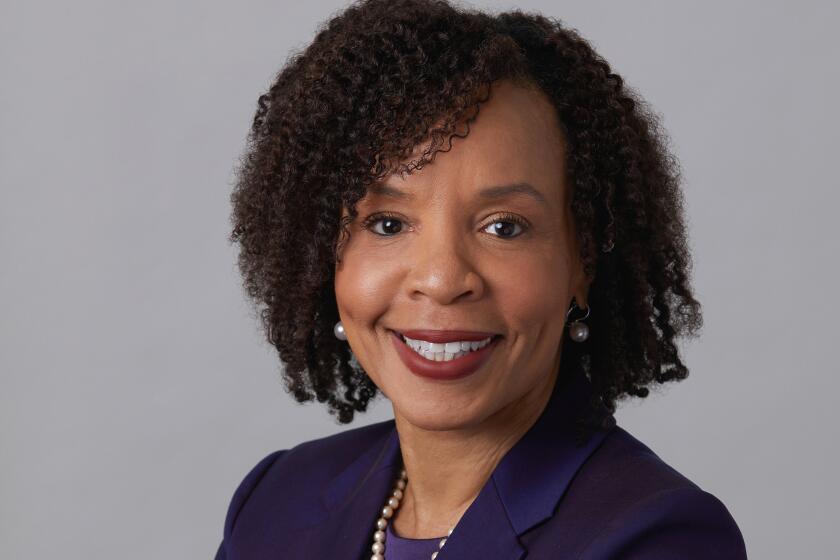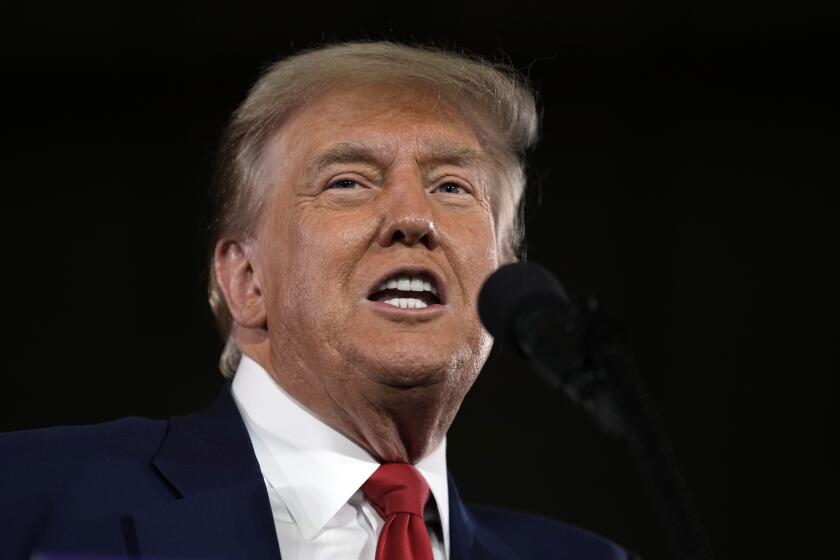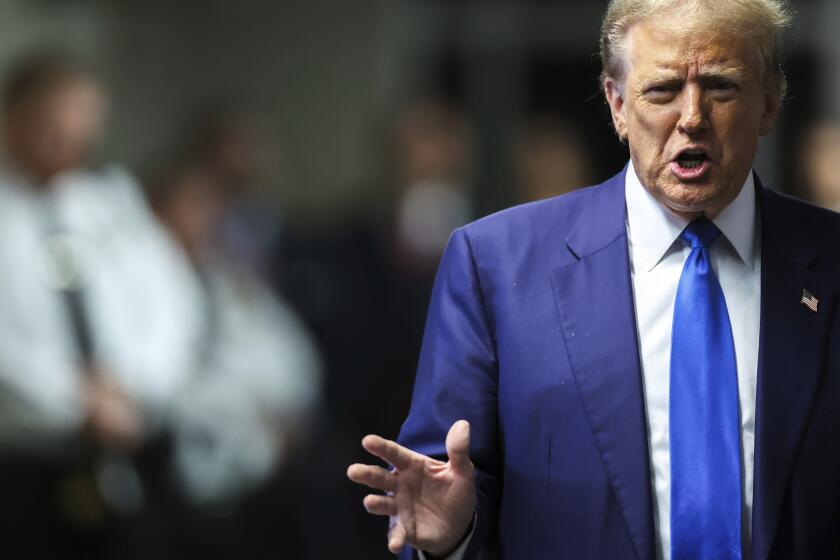Republicans’ ad blitz hits congressional campaigns
WASHINGTON — For Rep. Leonard L. Boswell, an eight-term Democrat from Iowa, the first hint of the ad war to come appeared in summer 2011. Almost a year and a half before election day, Crossroads GPS, the conservative nonprofit co-founded by Karl Rove, was on the airwaves in the congressman’s district, chewing him out over the deficit.
“The Republicans have been trying to buy this race from the get-go,” said Kevin McTigue, who manages Boswell’s campaign against nine-term GOP Rep. Tom Latham in a redrawn district that stretches from Des Moines to Council Bluffs.
But the biggest onslaught arrived last week, when Crossroads bought $850,000 worth of ads in the district. The buy, part of an $8.1-million offensive in 11 House districts, coincides with a nationwide swell of ad spending by conservative groups.
Sound familiar? It was at this point two years ago that Republican outside groups unleashed a flash flood of spending, catching Democratic House candidates off guard.
This year, the spending strategies by Republicans and Democrats illustrate just how differently the two sides have adapted to court decisions two years ago that upended campaign finance limits and launched an era of top-dollar spending by outside groups.
Republicans are largely following their 2010 script, banking on a last-minute blitz. Democrats are spending more money earlier in the cycle, hoping to build a firewall to withstand the GOP’s final push.
The inverse battle plans have echoes in the presidential race, where Mitt Romney, who trailed President Obama on the airwaves through spring and summer, now has the on-air advantage.
Outside groups spent $114 million in 2010 House races, according to the nonpartisan Center for Responsive Politics. This season’s tab is to be even higher, as both sides embrace the new campaign finance landscape, which allows individuals, corporations and unions to spend unlimited amounts, independently of parties and campaigns.
So far, outside groups have spent and booked more than $104 million in television time, according to a Democratic ad tracking source. That will almost certainly grow.
Before last week’s GOP offensive, Democratic outside groups held a slight edge in spending.
“We made this conscious decision to go in early to serve as a bulwark,” said Andy Stone, spokesman for House Majority PAC, a Democratic “super PAC.”
The group, founded in response to the Democrats’ 2010 walloping, has spent about $30 million so far this cycle and plans to spend an additional $5 million or so. It has also served as a clearinghouse where other reliable liberal allies, including labor unions and environmental groups, can share strategy and divvy up the political map.
“Clearly, in 2010, the Republicans adjusted to the new landscape much faster, more efficiently and more ruthlessly,” said Craig Varoga, whose group, Patriot Majority, has been supporting Democrats since 2005.
Cooperation among liberal groups “happened more slowly, but it happened effectively,” he said.
The Democrats’ initial spending advantage has been wiped away with the latest Republican barrage. GOP outside groups now have a margin of about 2 to 1.
Five groups — Crossroads GPS, the U.S. Chamber of Commerce, the YG Action Fund, the American Action Network and its super PAC affiliate the Congressional Leadership Fund — have committed at least $35 million to help Republican candidates in the final three weeks of their House races.
“This is our biggest push to date,” Crossroads spokesman Nate Hodson said. “House races tend to develop later. We want to wait to make sure we’re in a position to be most effective.”
By conserving the bulk of their resources for the end, Republicans say they have more flexibility to adapt to changes in the political environment and make Democrats scramble in response.
But the October surge has its risks. In some states, early voting began before the Republican air assault. And in this cacophonous political environment, television and radio ads could provide diminishing returns if voters tune them out.
Also significant: For independent political advertising, a dollar spent early goes further than one spent late. Whereas candidates for federal office pay a television station’s lowest commercial rate, outside groups pay market rates, which have been increasing as demand has soared.
In the Boswell-Latham race, conservative groups are spending at least $1.2 million in anti-Boswell ads in the final weeks — a closing bang for a contest that has seen incursions from a swarm of outside players.
Crossroads GPS weighed in on the race several times in 2011, with spots tying Boswell to a litany of White House policies including the stimulus bill and healthcare overhaul. American Action Network, like Crossroads, hammered Boswell on government spending. The U.S. Chamber of Commerce ran an ad commending Latham as an advocate for lower taxes.
The early volley spurred House Majority PAC to jump in, portraying Latham as more loyal to his close friend House Speaker John A. Boehner (R-Ohio) than to his constituents. (Perhaps not coincidentally, the Congressional Leadership Fund, a super PAC aligned with Boehner, included this district in its latest blast of spending.)
After a lull, the back-and-forth began in earnest in September. Nearly every major House-focused outside group — as well as both parties’ congressional campaign committees — have taken a swing. Some not-so-major groups have waded in too, including the National Assn. of Realtors and the Center for Individual Freedom, a nonprofit with past ties to the tobacco industry. Both took aim at Boswell.
House Majority PAC plans to reenter the district this weekend with radio ads. Most of these ads will air in the Des Moines media market.
Viewers there will also see ads for three other House races. And they have been seeing presidential ads since the lead-up to the GOP caucuses in 2011.
Iowa “has had two years of attack ads,” said James Carstensen, a senior aide to Latham. “I don’t know if it just becomes white noise at this point.”
More to Read
Get the L.A. Times Politics newsletter
Deeply reported insights into legislation, politics and policy from Sacramento, Washington and beyond. In your inbox three times per week.
You may occasionally receive promotional content from the Los Angeles Times.







